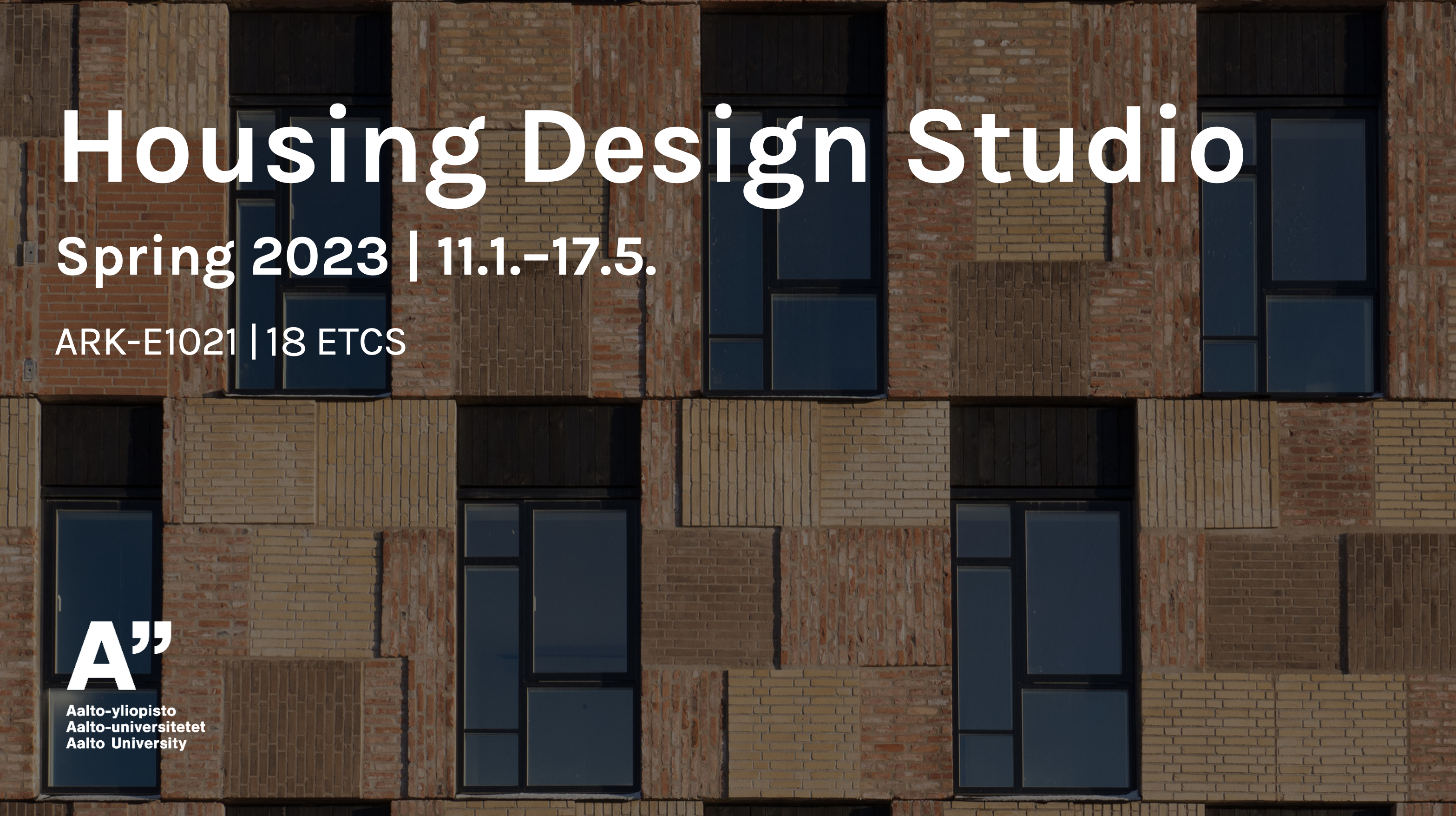ARK-E1021 - Studio Spring, Housing Design, 11.1.2023-31.5.2023
This course space end date is set to 31.05.2023 Search Courses: ARK-E1021
Topic outline
-

Photo: Danish Design Review. 2019. Resource Rows by Lendager.
Background & info
Climate crisis challenges the cities and architects in providing dense, socially resilient, and adaptable housing with minimal environmental footprint. The common way of responding to these needs is oftentimes through replacing old buildings with new ones built from virgin resources. This solution, however, is not ideal as the manufacturing phase of a contemporary housing building accounts for half of its whole life carbon emissions. The demolished building stock should be considered as a vital resource bank to be utilized in the upkeep, restoration and refit of the present housing stock and new construction.
This studio designs a housing quarter from reused building components. The foremost objective is to study direct and creative reuse, minimizing the embedded energy of the new building. In addition, the students will have the opportunity and freedom to choose from several relevant circular design strategies, such as adaptability, maintainability, and design for disassembly. The studio produces knowledge of how circular design differs from the existing practice: What are the functional, aesthetical, and processual ramifications of circularity for the architectural design process and the resulting housing architecture? What kind of novel opportunities and challenges arise?
Task
The design task is to conceptualize and design a housing quarter from reused building parts to Meri-Rastila consisting of two separate buildings around a common yard. The concept and architectural design should aim towards utilizing the potential of the most prominent construction waste flows. The dwelling architecture should provide social integration: fostering interaction between people, belonging to a community, and preventing segregation.
The task is approached first through familiarizing with the existing research, practical knowledge and material banks, synthesising these and only then adapting the acquired knowledge to the architectural design practice. This process enables understanding of the existing needs and shortcomings of current practices and promotes basing the architectural design on substance-informed and holistic approaches.
